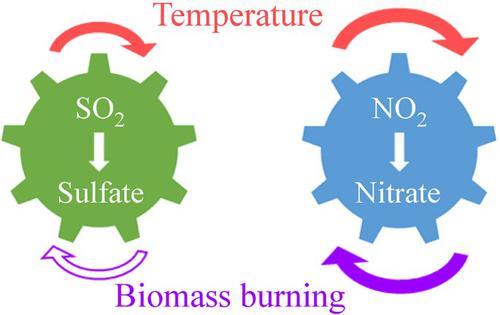Frontiers of Environmental Science & Engineering ( IF 6.4 ) Pub Date : 2021-05-30 , DOI: 10.1007/s11783-021-1452-0 Yuan Cheng , Qinqin Yu , Jiumeng Liu , Youwen Sun , Linlin Liang , Zhenyu Du , Guannan Geng , Wanli Ma , Hong Qi , Qiang Zhang , Kebin He

|
Formation of secondary inorganic aerosol (SIA) was investigated during a six-month long heating season in Harbin, China. Enhanced sulfate formation was observed at high relative humidity (RH), with the same threshold RH (80%) for both colder and warmer measurement periods. Compared to wintertime results from Beijing, the threshold RH was considerably higher in Harbin, whereas the RH-dependent enhancement of sulfur oxidation ratio (SOR) was less significant. In addition, the high RH events were rarely encountered, and for other periods, the SOR were typically as low as ∼0.1. Therefore, the sulfate formation was considered inefficient in this study. After excluding the several cases with high RH, both SOR and the nitrogen oxidation ratio (NOR) exhibited increasing trends as the temperature increased, with the increase of NOR being sharper. The nitrate to sulfate ratio tended to increase with increasing temperature as well. Based on a semi-quantitative approach, this trend was attributed primarily to the temperature-dependent variations of precursors including SO2 and NO2. The influence of biomass burning emissions on SIA formation was also evident. With stronger impact of biomass burning, an enhancement in NOR was observed whereas SOR was largely unchanged. The different patterns were identified as the dominant driver of the larger nitrate to sulfate ratios measured at higher concentrations of fine particulate matter.

























 京公网安备 11010802027423号
京公网安备 11010802027423号